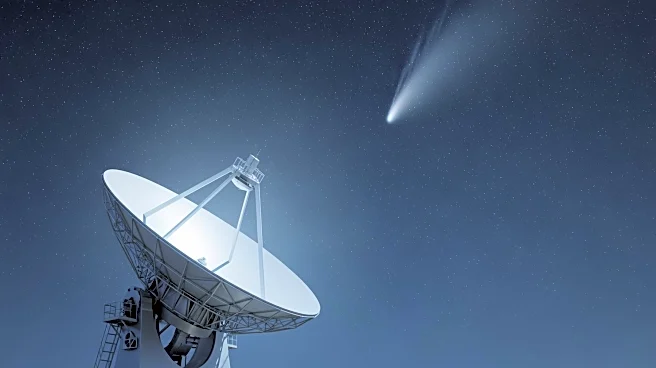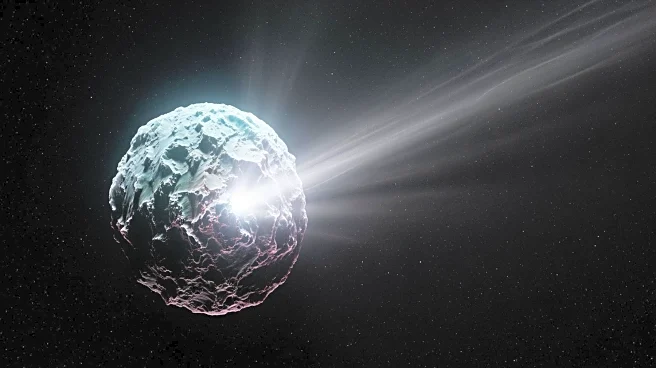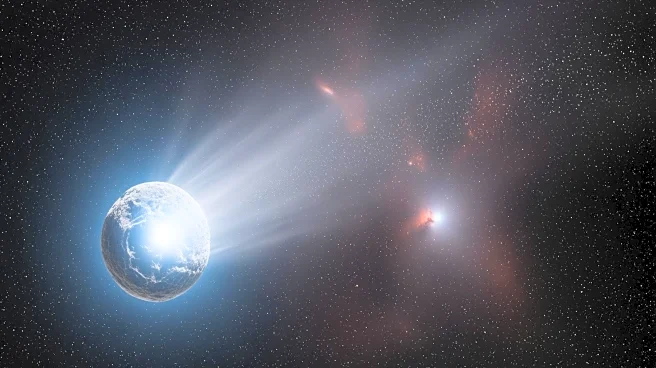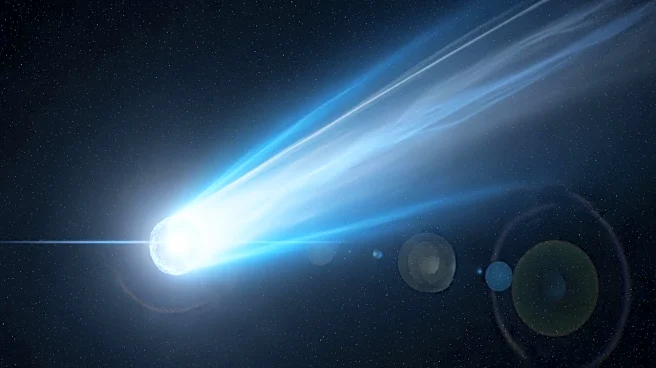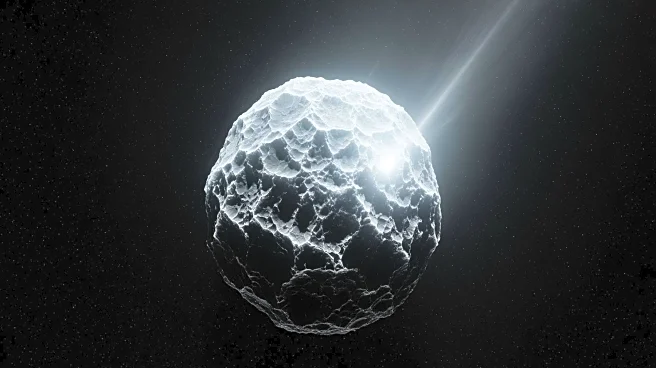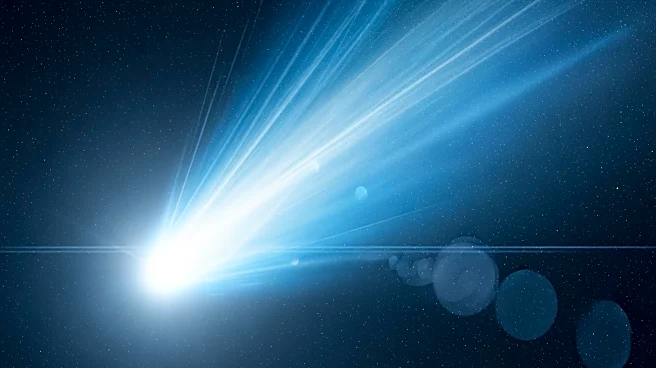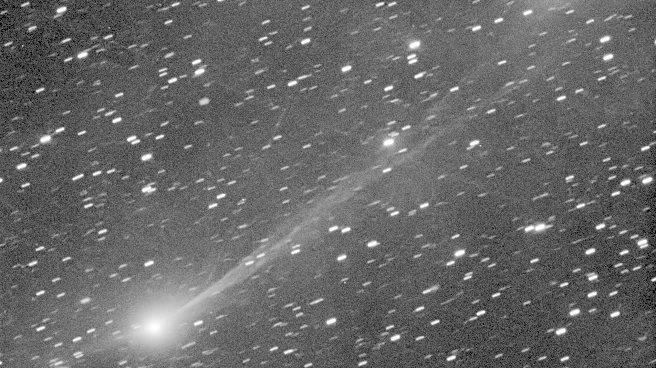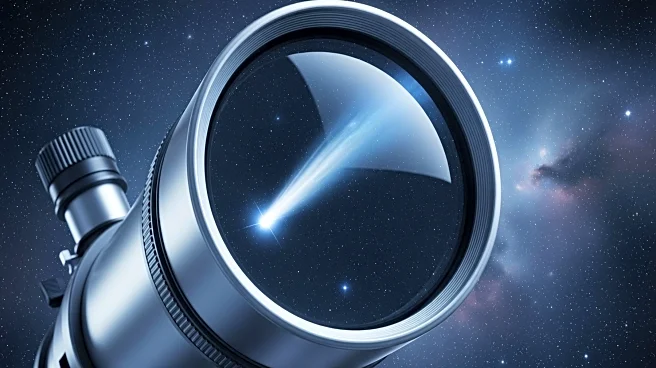What's Happening?
A viral clip has surfaced, suggesting that the interstellar comet 3I/Atlas is sending signals as it approaches Earth. The clip combines telescope footage with audio beeps, implying real-time transmissions. However, NASA and other scientific bodies have
clarified that these claims are unfounded. Observations from South Africa's MeerKAT array and NASA's Swift telescope have detected hydroxyl signatures, which are typical of cometary activity when sunlight breaks apart water vapor venting from the comet. NASA has reiterated that 3I/Atlas is a natural comet, not an artificial object, and it will not come closer than 170 million miles to Earth. The comet's activity is attributed to its composition and outgassing, not communication signals.
Why It's Important?
The viral claims about 3I/Atlas highlight the challenges in distinguishing scientific facts from sensationalized misinformation. Such misinformation can lead to public confusion and distract from genuine scientific inquiry. The comet's behavior provides valuable data for planetary scientists studying interstellar objects, contributing to our understanding of cometary physics and the formation of celestial bodies. The debunking of these claims reinforces the importance of relying on verified scientific data and expert analysis, ensuring that public discourse remains informed and accurate.
What's Next?
NASA and other observatories will continue to monitor 3I/Atlas as it follows its hyperbolic path through the solar system. The closest approach to Earth is expected around December 19, 2025, at a safe distance of approximately 170 million miles. As viewing conditions improve, agencies will compile multi-mission images and spectra to further study the comet's composition and behavior. Continued scientific observation will provide more insights into the comet's characteristics, contributing to the broader understanding of interstellar objects.
Beyond the Headlines
The viral clip's claims have sparked discussions about the potential for technological signatures in space, although these remain speculative and unsupported by current data. The comet's non-gravitational acceleration has been suggested by some as a possible technological signature, but mainstream scientific consensus attributes this to natural outgassing. The incident underscores the need for critical evaluation of extraordinary claims and the role of scientific communication in dispelling myths and promoting factual understanding.
